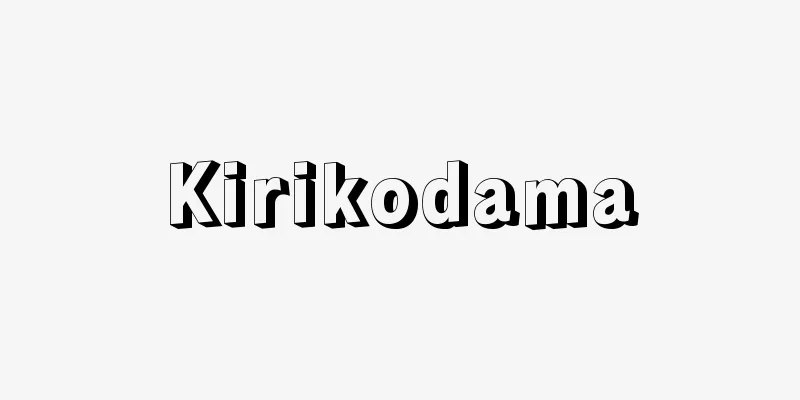Komainu - Guardian dog

|
A statue resembling a lion. It is also written as Goma-inu or Koma-inu. It is also called Shishi-gata, Shishi-komainu, or simply Koma. Originally it was a lion, but the prevailing theory is that it was introduced from Goryeo long ago and is called Koma-inu. One theory is that it was placed as a talisman to ward off evil, so it is also called a demon-repelling dog. The Kinpi-sho states that it was placed on the bottom of the blinds or folding screens of the Seiryoden as a chinshi, and the one on the left is a lion. Many are placed in front of the head of a shrine or in front of a main building for protection and to ward off evil, but they can also be placed in temples. They are usually placed as a pair, facing each other, with one open and the other closed, but there are exceptions where both are open or closed. Many are made of wood or stone, but there are also metal and ceramic ones. The wooden remains designated as Important Cultural Properties of Japan include Okunitama Shrine in Fuchu, Tokyo; Nishiwaki family in Ojiya, Niigata; Shirayamahime Shrine in Hakusan, Ishikawa; Taiho Shrine in Ritto, Shiga; Mikami Shrine in Yasu, Shiga; Shirahige Shrine in Takashima, Shiga; Kosan-ji Temple in Ukyo Ward, Kyoto (four pairs, two of which have the date 1225 written on the bases); Yasaka Shrine in Higashiyama Ward; Fujimori Shrine in Fushimi Ward; and Hyogo Shrine in Ukyo Ward, Kyoto. These include Takamefu Shrine in Sanda City, Kumamoto Prefecture; Yakushiji Temple in Nara City; Niutsuhime Shrine (two pairs) in Ito County, Wakayama Prefecture; Mitsugi Hachiman Shrine in Mihara City, Hiroshima Prefecture; and Kibitsu Shrine in Fukuyama City, Hiroshima Prefecture. Stone examples include Yuki Shrine in Sakyo Ward, Kyoto City; Komori Shrine in Miyazu City; Munakata Taisha Shrine in Munakata City, Fukuoka Prefecture; and Kanzeonji Temple in Dazaifu City, Fukuoka Prefecture. Ceramic examples include Katori Shrine in Katori City, Chiba Prefecture, and Fukagawa Shrine in Seto City, Aichi Prefecture. [Ken Mitsuhashi] "The Komainu Dictionary by Uesugi Chigo (2001, Ebisu Kosho Publishing)" [Reference] | | |Source: Shogakukan Encyclopedia Nipponica About Encyclopedia Nipponica Information | Legend |
|
獅子(しし)に似た像。胡麻犬、高麗犬とも書く。獅子形とも、また獅子狛犬とも称し、単に狛ともよぶ。本来は獅子であるが、昔、高麗から伝来したので高麗犬というとの説が有力。一説に、魔除(まよ)けとして置かれたので拒魔犬とも。『禁秘抄』に、清涼殿の御簾(みす)や几帳(きちょう)の裾(すそ)に鎮子(ちんし)として置かれたとあり、左を獅子としている。多くは神社の社頭や社殿の前などに守護、魔除けのために置かれるが、寺院に置かれる場合もある。向かい合わせに、一つは口を開き、他は閉じるという阿吽(あうん)の一対として置かれるのが普通であるが、両方とも開口、閉口などの例外もある。木や石でつくられたものは多いが、金属や陶製のものもある。国の重要文化財に指定される遺品は、木造では、東京都府中市の大国魂(おおくにたま)神社、新潟県小千谷(おぢや)市の西脇(にしわき)家、石川県白山市の白山比咩(しらやまひめ)神社、滋賀県栗東(りっとう)市の大宝(たいほう)神社、同野洲(やす)市の御上(みかみ)神社、同高島市の白鬚(しらひげ)神社、京都市右京区の高山寺(4対。うち2躯(く)の台座に嘉禄(かろく)元年(1225)とある)、東山区の八坂(やさか)神社、伏見(ふしみ)区の藤森神社、兵庫県三田(さんだ)市の高売布(たかめふ)神社、奈良市の薬師寺、和歌山県伊都郡の丹生都比売(にうつひめ)神社(2対)、広島県三原市の御調八幡宮(みつぎはちまんぐう)、同福山市の吉備津(きびつ)神社などのものがあり、石造では、京都市左京区の由岐(ゆき)社、宮津市の籠(こもり)神社、福岡県宗像(むなかた)市の宗像大社、同太宰府(だざいふ)市の観世音寺のものがあり、陶製では、千葉県香取(かとり)市の香取神宮、愛知県瀬戸市の深川神社などのものがある。 [三橋 健] 『上杉千郷著『狛犬事典』(2001・戎光祥出版)』 [参照項目] | | |出典 小学館 日本大百科全書(ニッポニカ)日本大百科全書(ニッポニカ)について 情報 | 凡例 |
Recommend
HAZARD
A Japanese movie released in 2006. Directed, writt...
chemoorganotroph
…Organisms that can use light directly as an ener...
al-Sayyab (English spelling)
...The Romantic poets, pioneered by Ḥalīl Muṭran ...
Touat (English spelling)
A group of oases in the Saoura region in the centr...
Soluble RNA
...There are many other possible functions of rRN...
Ugly man of Ashihara - Ugly man of Ashihara
...The name means "Great Lord of the Country...
Eucharistia; holy communion
It refers to the Last Supper, which the New Testam...
Signatologia
… The “Book of Nature” is the name for the unwrit...
Wu Han
1909‐69 Chinese historian and politician. He has s...
One yen territory
...Of course, the same was true in the case of pu...
Provisional registration - karitouki
A provisional registration is a registration made...
Little Citizen - Shokokumin
This boys' magazine was first published in 188...
Sperber, D.
He sees totemism as a phenomenon that accompanies...
"A Walk of the Viennese Poet" - A Walk of the Viennese Poet
…He attended the Frankfurt National Assembly in 1...
Megaron (English spelling)
Architectural term. A rectangular residential buil...









